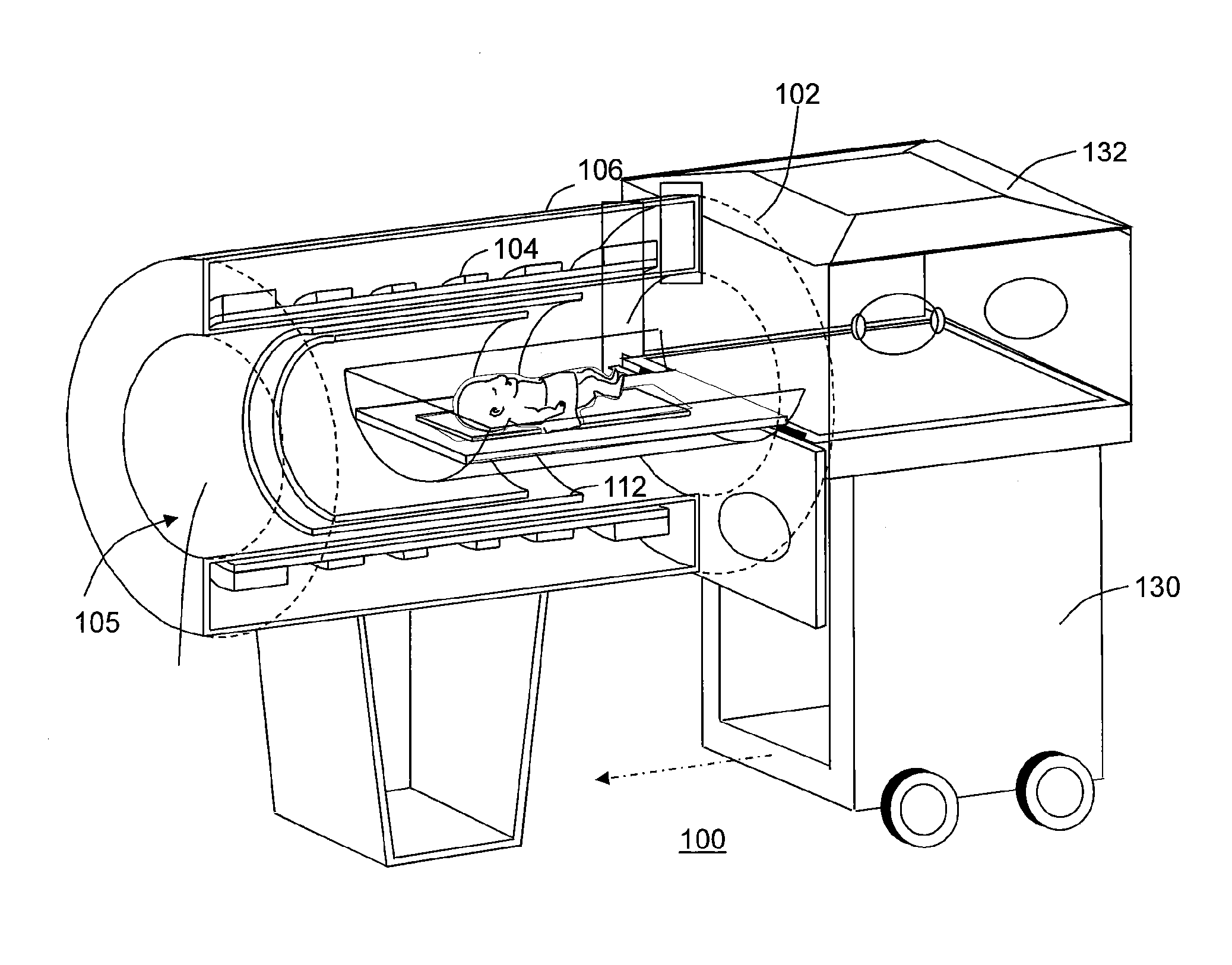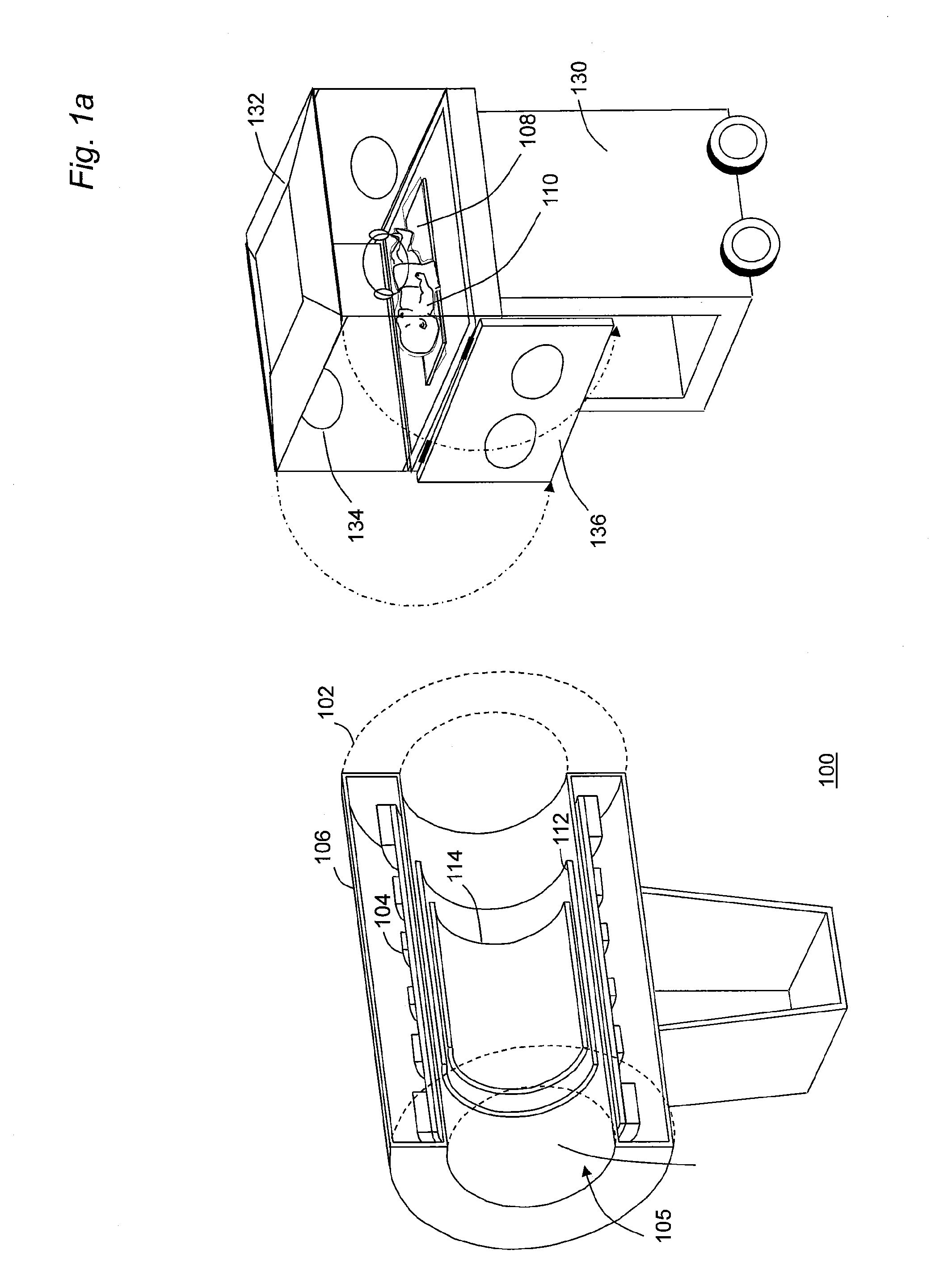MRI Transfer Table Assembly
a transfer table and assembly technology, applied in the field of magnetic resonance imaging equipment, can solve the problems of not routinely performing magnetic resonance imaging (mri), infants must be moved, and the infant cannot be moved
- Summary
- Abstract
- Description
- Claims
- Application Information
AI Technical Summary
Benefits of technology
Problems solved by technology
Method used
Image
Examples
Embodiment Construction
[0022]The use of MRI techniques for infants, and in particular neonates, is highly desirable. MRI techniques provide diagnostic information without patient exposure to ionizing radiation, and are suitable for extended and repeated studies.
[0023]MR techniques provide excellent anatomic visualization and functional information. They can be used to measure neural fiber track development and have a number of potential clinical uses including, but not limited, to diagnosis of brain trauma, cardiac abnormalities, congenital defects and the assessment of lung development.
[0024]There are, however, a number of challenges in the use of MRI for neonatal imaging. Patient access during scanning can be difficult as MR magnets are typically large and surround the patient. Safety concerns include forces on ferromagnetic objects, potential for rf heating and acoustic noise. Also, logistics may be difficult, as MR scanners tend to be in radiology departments, while neonate infants are typically in th...
PUM
 Login to View More
Login to View More Abstract
Description
Claims
Application Information
 Login to View More
Login to View More - R&D
- Intellectual Property
- Life Sciences
- Materials
- Tech Scout
- Unparalleled Data Quality
- Higher Quality Content
- 60% Fewer Hallucinations
Browse by: Latest US Patents, China's latest patents, Technical Efficacy Thesaurus, Application Domain, Technology Topic, Popular Technical Reports.
© 2025 PatSnap. All rights reserved.Legal|Privacy policy|Modern Slavery Act Transparency Statement|Sitemap|About US| Contact US: help@patsnap.com



